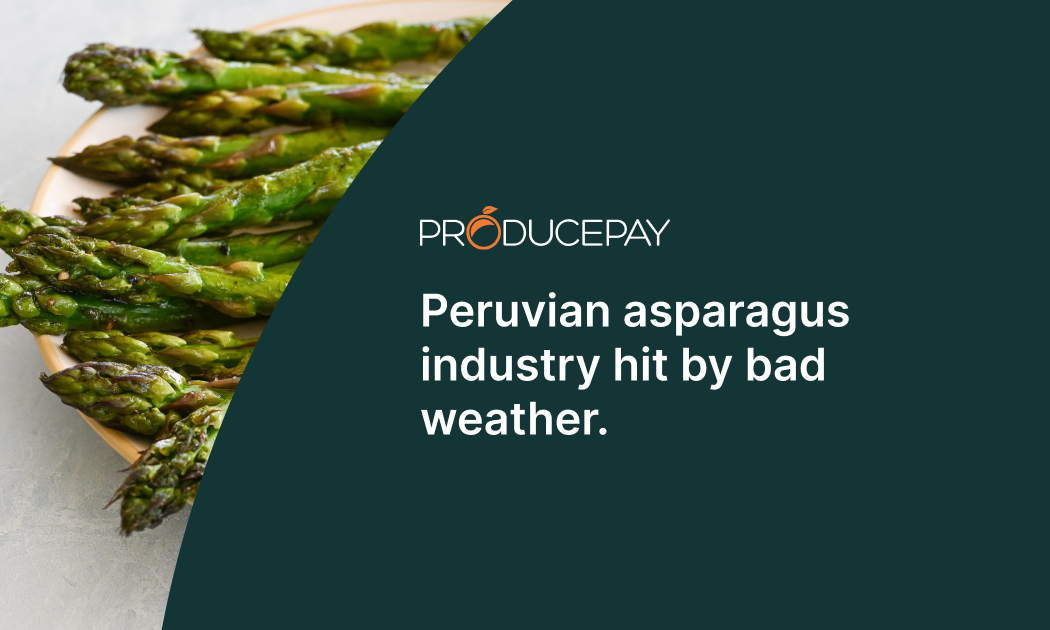
Peruvian asparagus industry hit by bad weather.
The Peruvian asparagus industry faces significant challenges in both production and exports due to extreme weather conditions caused by cyclone Yaku and El Niño.
These adverse events caused decreased yields and transportation challenges, impacting exports to the United States and increasing prices.
Loss of Peruvian asparagus production
The asparagus crop in Peru has suffered significant losses due to adverse weather conditions. Cyclone Yaku hit the country’s north, causing a massive increase in rainfall and flooding, with some affected regions receiving a year’s worth of rain in one day.
The official onset of El Niño brought additional heavy rains that damaged asparagus production, delayed agricultural activities, and damaged roads vital for transportation.
The combination of these events resulted in an unexpected increase in temperatures, with some areas experiencing temperatures of 80-95 °F, which has complicated production processes and negatively affected expected yields.
Decrease in Peruvian asparagus exports
The damage to transportation systems, the loss in production, increased transportation costs due to the pandemic, and the strict requirements imposed by U.S. sanitary authorities have directly impacted asparagus exports.
By the end of June, Peruvian asparagus exports to the United States experienced a significant decrease of almost 40% compared to last year.
This situation is particularly problematic, as the United States is the primary market for Peruvian asparagus, importing more than 217 million pounds in 2022, 56% of the total volume exported in that year. In addition, Peru ranks second, after Mexico, as a supplier of asparagus to the United States.
It is important to note that, in 2022, Peru had already experienced a decrease in exports to the United States of 1.8% compared to the previous year.
The decline in exports has also driven up selling prices in the U.S., experiencing a 12.75% increase in average daily prices during week 26 of the current year.
What’s ahead for the Peruvian asparagus industry?
Despite the current challenges, improvement is expected in the next two to three months, with southern regions taking over production and contributing to the industry’s recovery.
However, selling prices in the United States will likely continue increasing due to high demand during the summer months. This could benefit Peruvian asparagus agro exporters, but it would also affect consumers in the United States, who would have to pay more to enjoy this product.
It is important to remember that the peak export season for Peruvian asparagus usually occurs during the year’s first quarter, so the total volume exported in 2023 is likely lower than in 2022.
Looking ahead to 2024, the outlook is more encouraging, with hopes for greater stability in Peruvian asparagus production and exports as the effects of El Niño wane.
Given the challenges faced by the asparagus industry in Peru, it is crucial for farmers and agro exporters to receive the support they need to overcome these obstacles. ProducePay offers financial solutions specifically designed for the agro-export sector, such as Pre-Season Financing, providing farmers with the necessary working capital to maintain operations and handle unforeseen situations.
Sources: Agronometrics, Infobae, Agraria.pe, USDA-AMS
